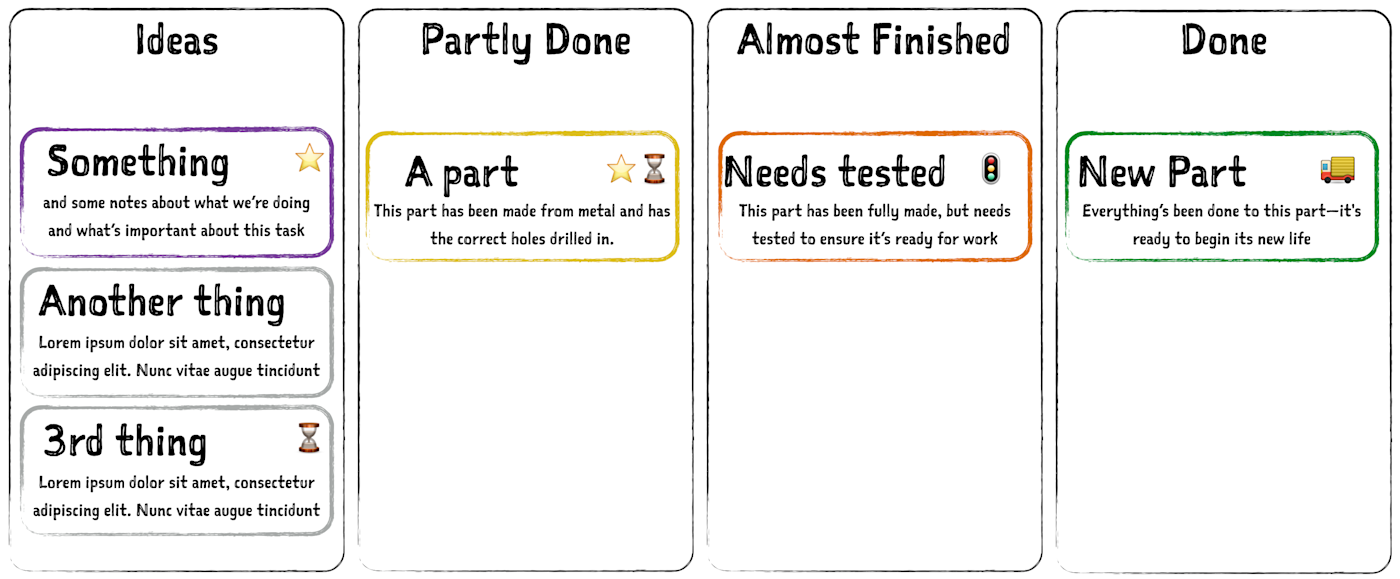Project Management Cheatsheet
Apr 7, 2022 . 4 min read . 252 views
title: 'Project Management Cheatsheet' publishedAt: '2022-04-07' summary: 'Agile, Kanban, and Scrum are not three different project management styles. ...' category: '#ProductManagement #Cheatsheet'
Agile, Kanban, and Scrum aren't three different project management styles.
Agile is a project management philosophy.
Kanban is a project management tool.
Scrum is a project management methodology.
Waterfall Project Management
- Traditionally used in Project management
- Tasks are executed in a sequential manner
- Limitations include project-wide delays due to delays in one phase.
- More suitable for manufacturing industries
- Tools: Gantt Charts
Agile Project Management
- A philosophy(iterative & fast shipping) for project management
- Split projects into smaller projects and ship each one as a step towards reaching the end goal.
- Suitable for the software industry
- Tools: Jira, Trello
Kanban
- A tool for managing projects
- Developed in 1940s by Toyota executives
- Used to visualize project status via Kanban boards
- Key Principles
- Visualize work
- Limit work in the process
- Focus on Flow
- Continuously Improve
- Tools: Trello
Scrum
- A methodology for managing projects.
- Structure of a Scrum Project
- Project Manager or Scrum Master
- Works with the team to identify tasks to be accomplished
- Populates the product backlog
- From the product, backlog populates the sprint backlog
- Sprint
- A finite period b/wn 2-4 weeks to complete the tasks in the sprint backlog
- No predefined map or order of priority to complete tasks
- Standups
- Daily quick meetings led by Scrum Master
- Objective To report progress and discuss task needs
- Sprint Reviews & Retrospective
- At the end of the sprint, all the tasks are reviewed collectively.
- Project Manager or Scrum Master
- Key Principles
- Transparency: Entire process visible to all the stakeholders
- Inspection: Frequent checkpoints to review progress
- Adaptation: Quick adjustments wherever required to reduce delays
- Tools: Jira, Monday.com
Frequently used terms in Project Management
User Story
- As a [persona], I want to [goal], so I can [motivation].
- Used to ensure design & development are focussed on user needs
Story Sizing
- Total effort required to complete a story
- Assigned using the Fibonacci sequence (1,2,3,5,8,13…)
- 1 story should equal 1 point for 1 day of work
- Epic -> Journey -> Story
- Large stories are called Epics
- Epics are made up of smaller journeys
- Journeys are made up of many stories
Agile Sprints
- 2-4 week phases to focus on specific tasks
Sprint Planning
- Used to help product teams determine which stories should be targeted for completion in the upcoming sprint
Backlog Grooming
- Session where the product team along with business stakeholders prioritize, add or remove user stories.
Sprint Retrospective
- An opportunity for the Product Team to inspect itself and create a plan for improvements to be enacted during the next Sprint.
Scrum Huddle
- Daily 15 min standup meeting led by the scrum master
- The team’s updates touch on three points:
- What stories did you complete yesterday?
- What stories will you focus on completing today?
- Are there any impediments preventing you from completing anything?
Velocity
- At the end of the sprint, the team compares estimated effort vs actual time taken to complete a story to calculate velocity.
Product Story Map
- Simple way to visually tell the product story
- The maps should help understand:
- Why we are building the product
- What are the product user goals and requirements
Horizontal Slices
- Used to divide sprints.
- In the above diagram the first row of stories denotes the features required to create an MVP.
Acceptance Criteria(AC)
- Conditions that a software product must satisfy to be accepted by a user
- Minimum tasks to be completed to fulfil a given story

